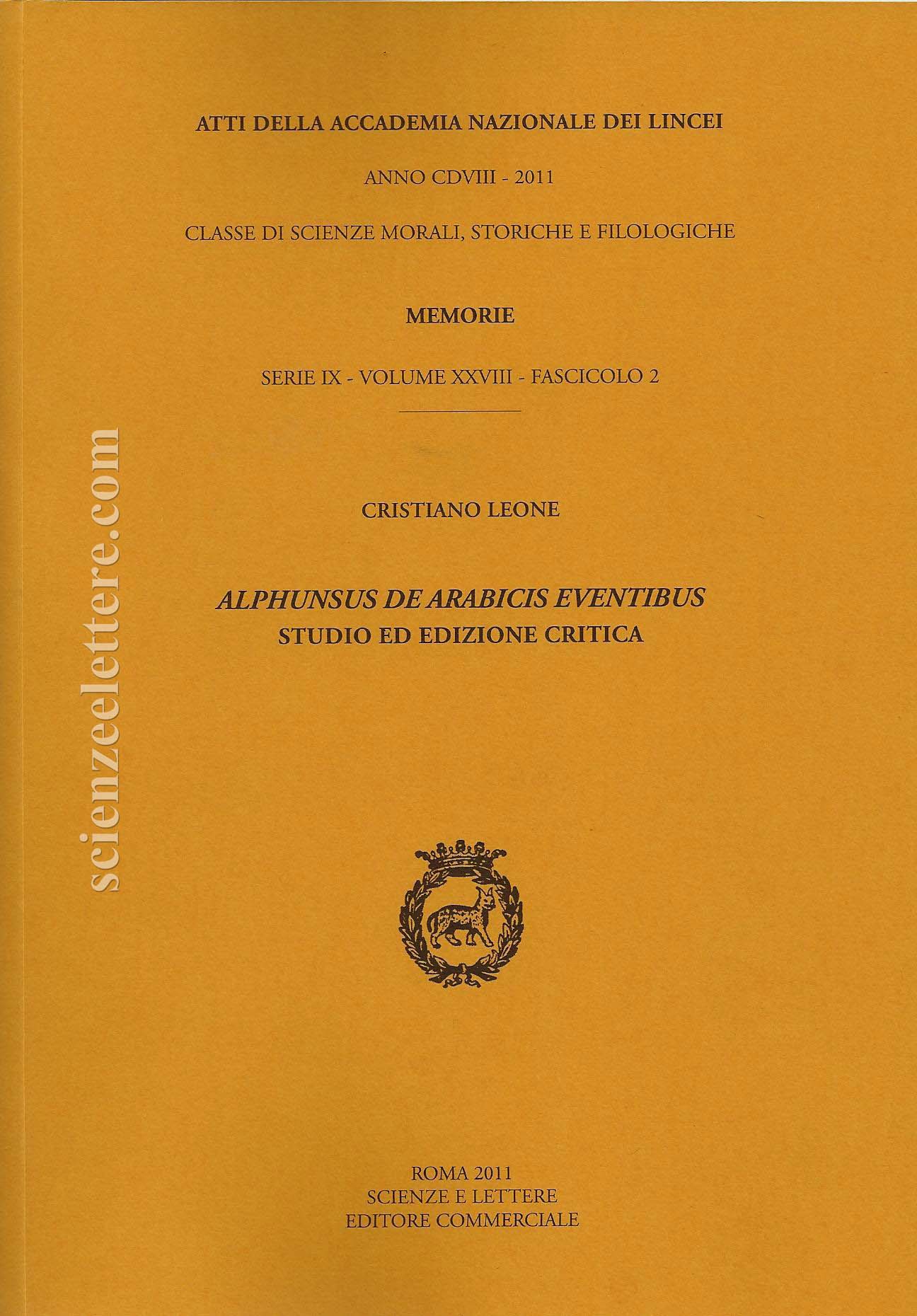Alphunsus de Arabicis eventibus. Studio ed edizione critica - Atti della Accademia Nazionale dei Lincei CDVIII - 2011 - Classe di Scienze Morali, Storiche e Filologiche - Memorie serie IX – vol. XXVIII – fasc. 2
- Anno: 2011
- Autore/i: Leone Cristiano
- Catalogo: Accademia Nazionale dei Lincei
- Argomento: Filologia
- Collana: Memorie Scienze Morali Storiche e Filologiche
- ISBN: 978-88-218-1039-1
- ISSN: 0391-8149
At the beginning of the 13th century an anonymous versifier rendered some sentences and tales from the Disciplina Clericalis by Petrus Alphonsi (1110 circa) into the elegiac metre. This was the origin of the Alphunsus de Arabicis eventibus, transmitted by a codicological unit from a composite manuscript (Berlin, Staatsbibliothek, Diez B Sant 28) which had been put together in the Benedictine abbey of Saint-Jacques in Liège.
Continuing the tradition of the rhetorical praeexercitamina, while at the same time reflecting the current vogue for a whole range of genres, the Alphunsus de Arabicis eventibus is something completely new with respect to its model. Its innovatory force lies in a new aesthetic sense which operates a veritable revolution in terms of contents, language and style, achieved by means of the amplificatio and reductio of the narrative material and the transformation of the spare, essential form of its precursor. Expressed in the more rigorous syntax of the elegiac metre, the Disciplina Clericalis takes the form of verse in which rhetorical figures abound. Nonetheless the most striking change lies in the calques and echoes of contemporary and above all classical authors. While the work of Petrus Alfonsi was a vehicle for the Oriental tale tradition, the constant interpolation of word for word citations means that this reworking is permeated with lively and immediately recognisable traces of both classical and medieval Latin culture.
Available up until now only in the critical edition of 1912 by Joseph Stalzer, devoid of a textual study, the Alphunsus de Arabicis eventibus is presented in a new critical text with a line by line translation and commentary. The introduction proposes a date and milieu for the work’s composition on the basis of historical, philological and literary evidence gleaned from a series of contemporary works bearing a systemic relationship to this text.
F.to 17x24, Brossura filo refe, pp. 498



